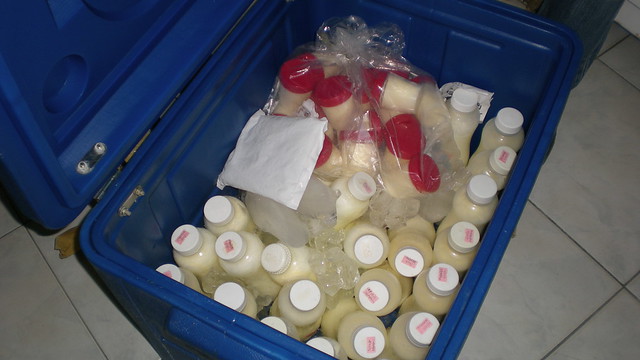It's summer time, and that means road trips for millions of American families. Many of those families have a baby. Now some babies LOVE the car seat. They can't wait to get in it and quickly fall asleep to the gentle hum of the road noises.
I wasn't blessed with that baby! Oh no! My babies (well 2 out the 4) thought the car seat was a torture chamber, especially designed to inflict the severest form of punishment on them. Granted, 20+ years ago, car seats were not as nice as they are today. But I still see many babies in my store who despise the car seat even today!
That can be a real problem if you have a road trip planned. When our kids were little all the grandparents lived at least 12 hours away. On a pastor's budget, flying was out of the question! Later we became missionaries and practically lived in the car while we were fund-raising...not always easy with baby in tow!
I love Elizabeth Pantley's
suggestions. She is a wonderful source of wisdom. We always made it a point to make frequent stops (at least every 3 hours) where I would pull baby out, change a diaper, feed, etc. But then the inevitable happened....baby had to go back into the torture chamber, and the screaming began again.
So in a herculean attempt at self-preservation, I learned the fine art of nursing on the go. Now before I go any further, I need to make a quick disclaimer...baby ALWAYS stays securely fastened in the car seat. However, if an accident were to occur, it could be bad for both of you. (editor's note: in light of
this blog, I honestly CANNOT recommend this technique while the car is moving!)
How I Discovered the "Hang a Boob" Technique
We were headed to central Florida from Birmingham in our little white Dodge Omni. We had left at about 3 in the morning so Sarah would sleep..and she did for about 3 hours. Then we stopped, ate breakfast, changed the D, and headed back into the car. She screamed bloody murder as we put her in the seat, so I gave her a toy and tried to soothe her. We tried going on down the road, thinking maybe she would settle down. No way, Jose!
As soon as we could pull over, I got in the back seat with her and started trying to play with her. She was NOT interested. Then I had an "aha" moment. I thought, "Nursing always calms this baby down...why don't I nurse her??!!" So I did. I got up on my knees, leaned over her, helped her latch on, and she went to town....she even fell asleep nursing and stayed that way until we stopped again. (Yes, I was even able to pull the boob out of her mouth!) After the next stop, I made sure I was on the other side of her so that she could nurse on that side. It worked like a charm. Thus was born the concept of "hanging a boob!"
I want to be quick to point out here that I had tried the pacifier only to have it spit out violently. So I tried again, and again. And she just got madder and madder! If your baby will be soothed with the paci, there really isn't any need to hang the boob (unless you just want to...) and it is MUCH safer NOT to!! But if you do resort to boob hanging, in light of what we now know, PLEASE do it with the car stopped!! There is no need to put you and baby at risk! Get baby securely buckled in, AC on, Hang a boob so baby settles and goes to sleep....THEN start moving with everybody safely buckled in!!
Now there are a couple of things to consider. Truckers, for example, may get an eyeful if they happen to look down at just the right moment. Passers-by looking into your car (they should just mind their own business, but you know how people are) may be surprised, especially if you don't have an Undercover Mama or nursing tank to cover your belly as you left your shirt. However, you don't know those people, so it doesn't really matter, now, does it?!
What does matter is that your baby who was screaming frantically calms down. Your husband who is about to drive doesn't end up in a wreck because he's distracted. And you manage to keep your sanity and arrive at your destination a little less frazzled.
So as you journey on your way this summer, don't be afraid to get in the back seat with baby and Hang a Boob! But, as mentioned before, the BEST and SAFEST way to do so is to Hang it with the car stopped and AC on....get baby to sleep, then take off - with you and baby both safely buckled!!










